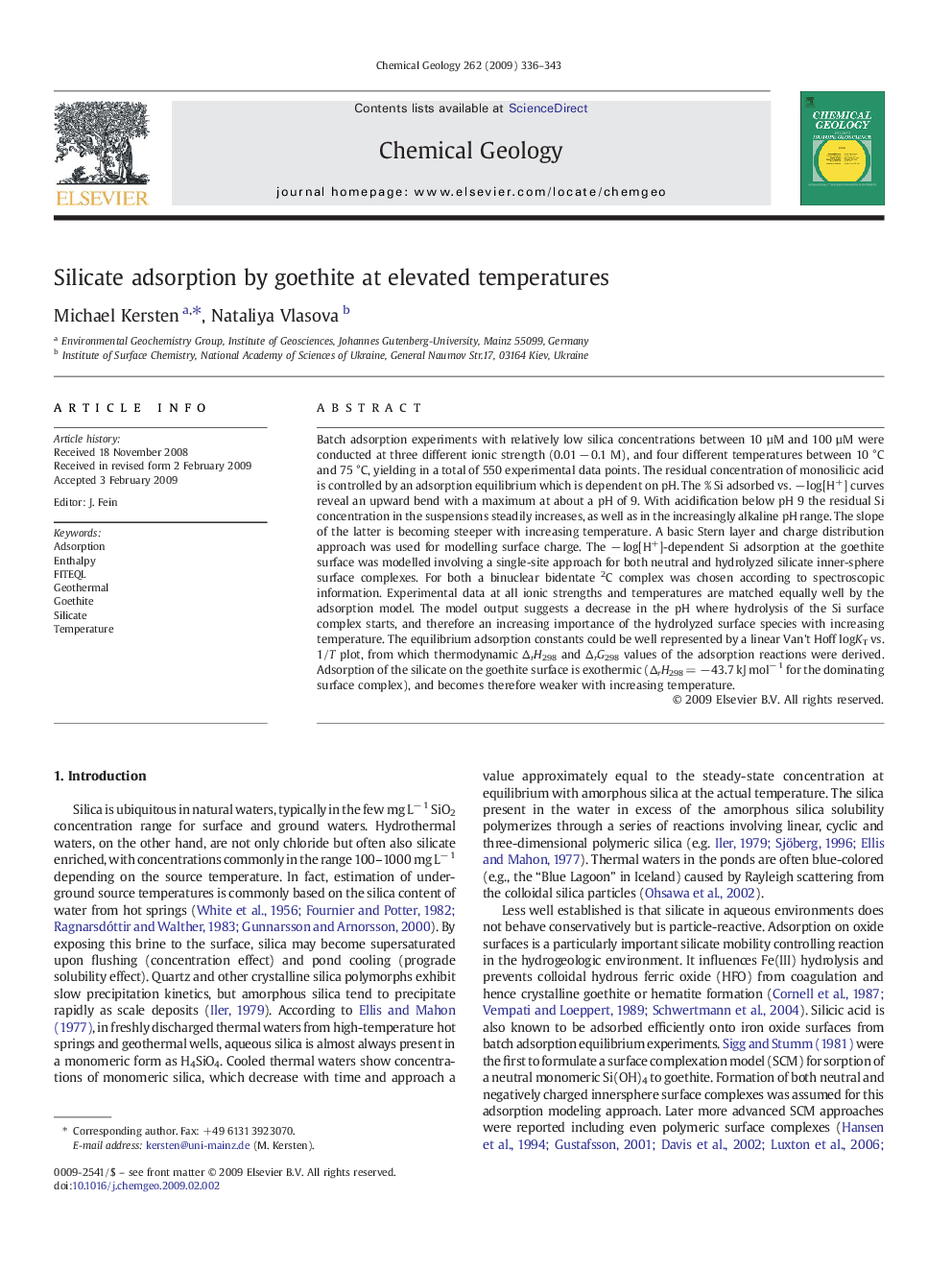| Article ID | Journal | Published Year | Pages | File Type |
|---|---|---|---|---|
| 4700372 | Chemical Geology | 2009 | 8 Pages |
Batch adsorption experiments with relatively low silica concentrations between 10 µM and 100 µM were conducted at three different ionic strength (0.01 − 0.1 M), and four different temperatures between 10 °C and 75 °C, yielding in a total of 550 experimental data points. The residual concentration of monosilicic acid is controlled by an adsorption equilibrium which is dependent on pH. The % Si adsorbed vs. − log[H+] curves reveal an upward bend with a maximum at about a pH of 9. With acidification below pH 9 the residual Si concentration in the suspensions steadily increases, as well as in the increasingly alkaline pH range. The slope of the latter is becoming steeper with increasing temperature. A basic Stern layer and charge distribution approach was used for modelling surface charge. The − log[H+]-dependent Si adsorption at the goethite surface was modelled involving a single-site approach for both neutral and hydrolyzed silicate inner-sphere surface complexes. For both a binuclear bidentate 2C complex was chosen according to spectroscopic information. Experimental data at all ionic strengths and temperatures are matched equally well by the adsorption model. The model output suggests a decrease in the pH where hydrolysis of the Si surface complex starts, and therefore an increasing importance of the hydrolyzed surface species with increasing temperature. The equilibrium adsorption constants could be well represented by a linear Van't Hoff logKT vs. 1/T plot, from which thermodynamic ΔrH298 and ΔrG298 values of the adsorption reactions were derived. Adsorption of the silicate on the goethite surface is exothermic (ΔrH298 = − 43.7 kJ mol− 1 for the dominating surface complex), and becomes therefore weaker with increasing temperature.
